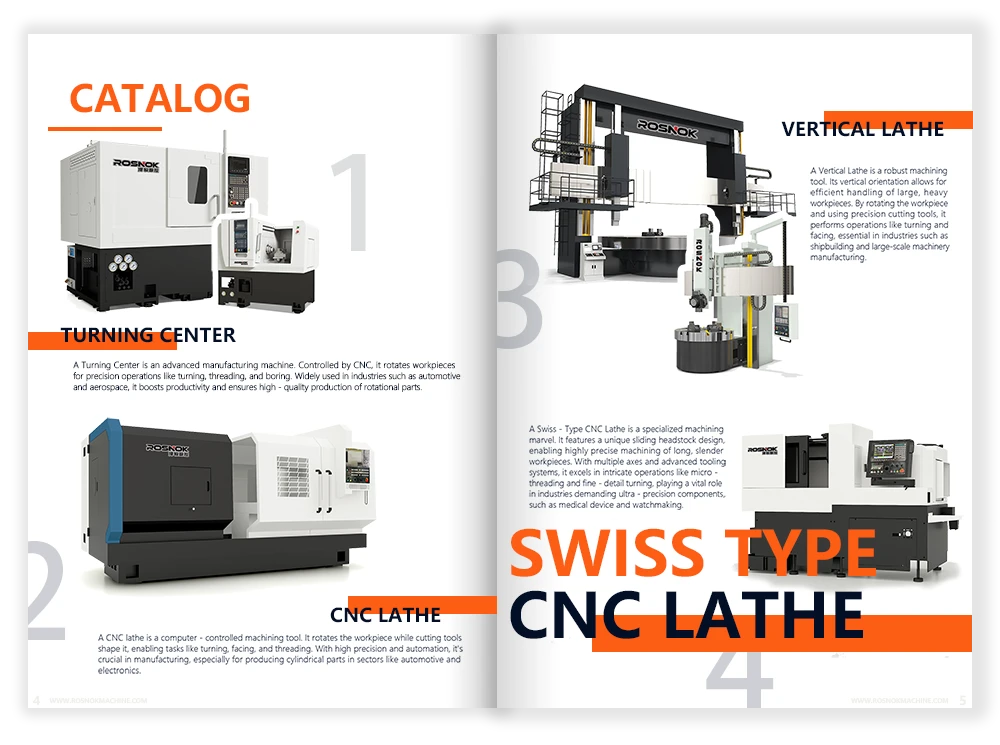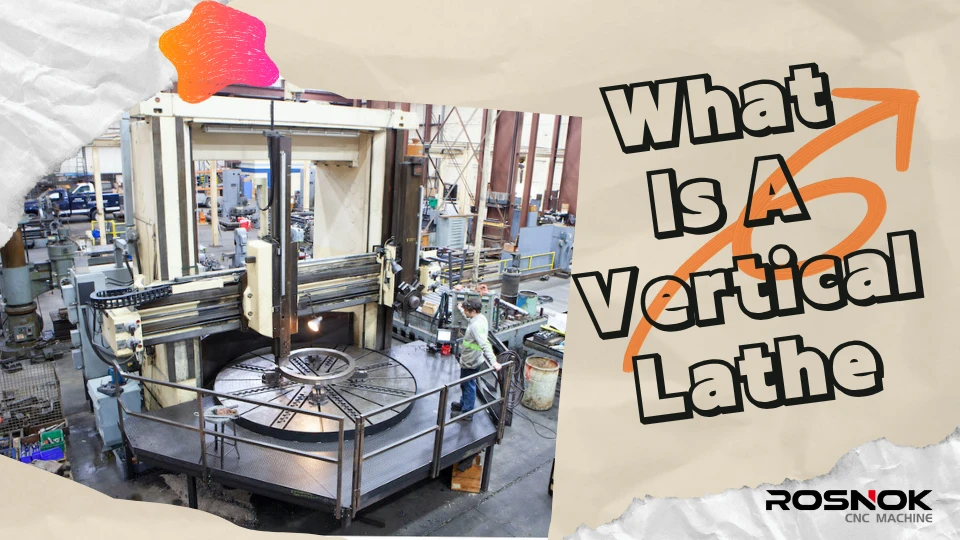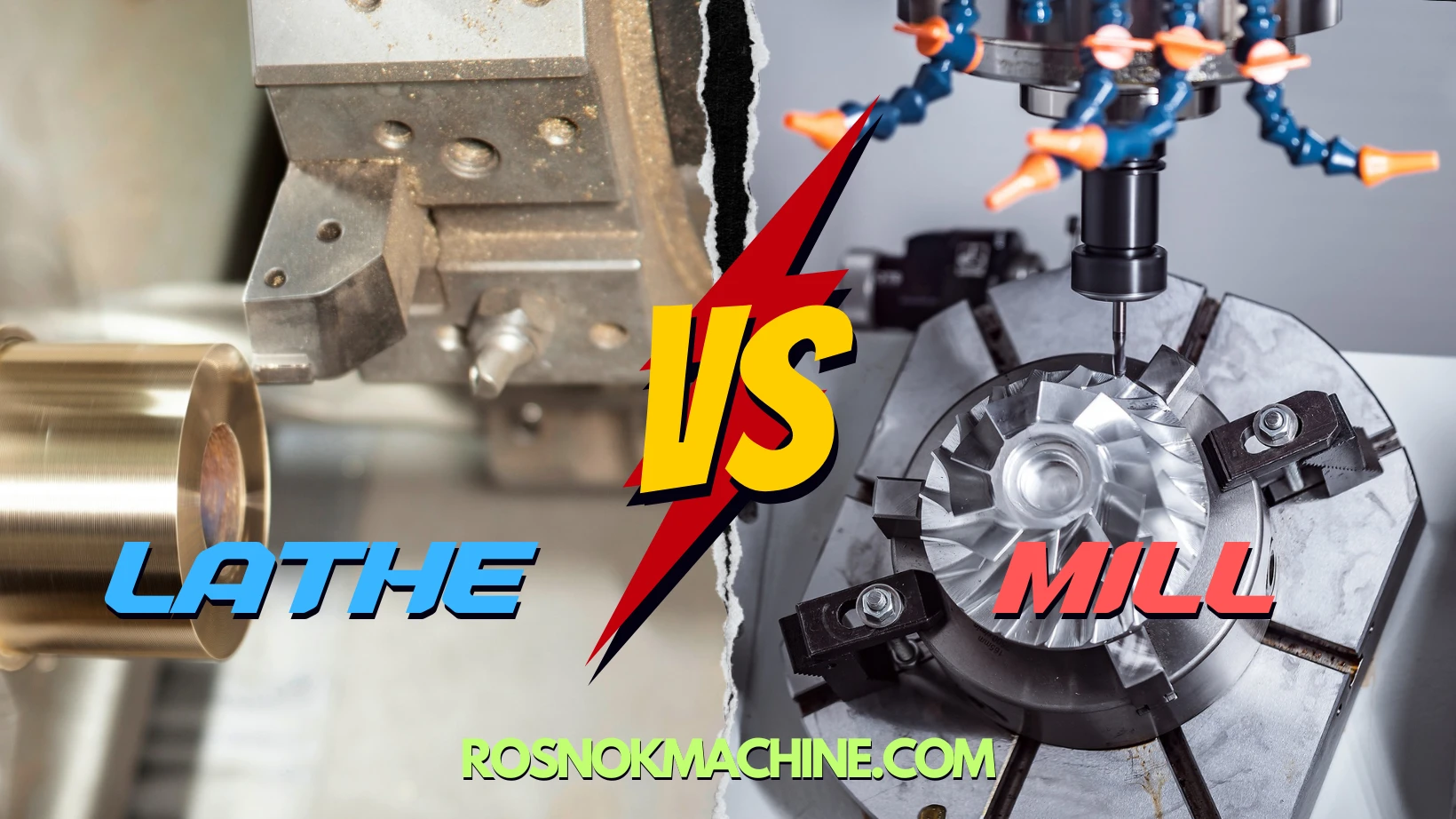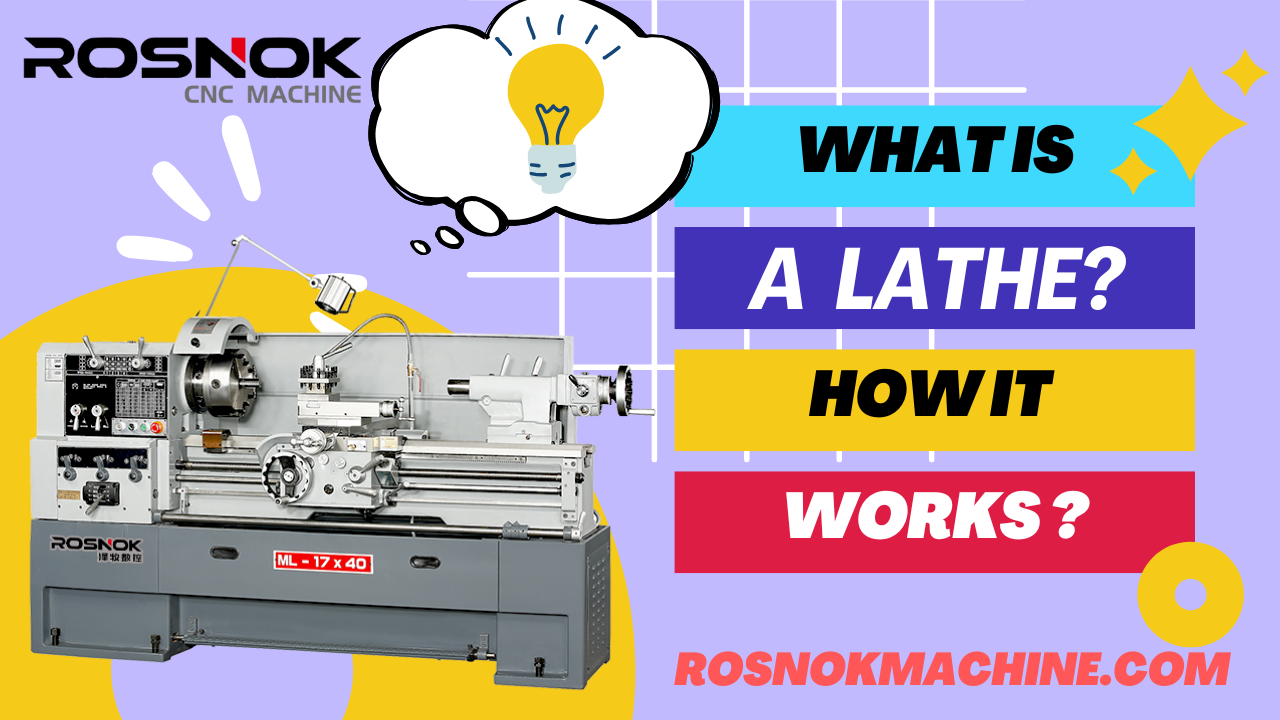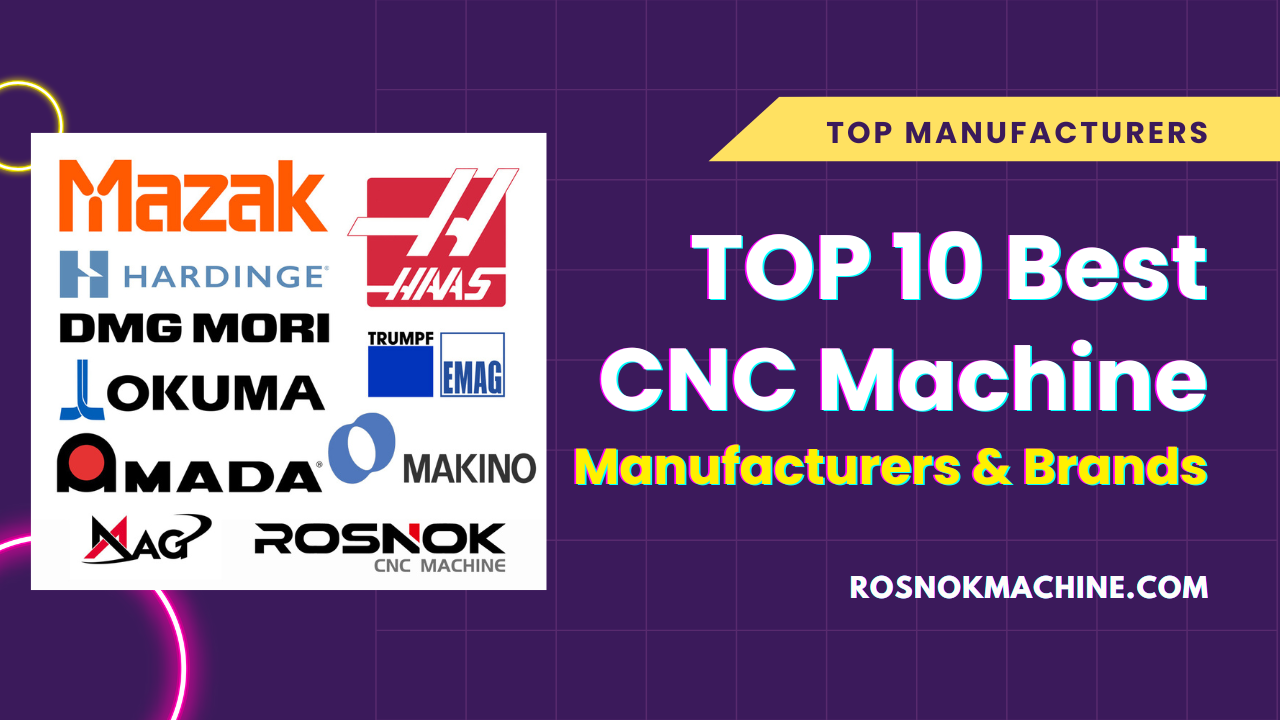Have you ever wondered What is a Vertical Lathe? How does it actually work? What makes it different from other lathes? What are its key components? How is it operated? Where is it used? Why do so many industries rely on it today? What advantages does it offer over traditional machines?
A vertical lathe, also known as a vertical turning lathe (VTL), is a machine tool used for machining large, heavy workpieces. Unlike horizontal lathes, it features a vertical spindle that drives a rotating table to turn the workpiece against stationary cutting tools. The workpiece is mounted on a rotating table, allowing for precise turning, boring, drilling, and other operations. Vertical lathes are ideal for large-diameter, short-length parts, offering stability, high precision, and efficiency in industries like aerospace, automotive, and heavy machinery manufacturing.
Continue reading this article to learn what is a Vertical Lathe, covering its basic structure, working principles, key components, common types, and how it differs from horizontal lathes.
What Is a Vertical Lathe?
A vertical lathe is one of the fundamental machines used in modern metalworking. It is built for vertical turning operations and is particularly useful for processing large, round components that require stable support. This section will help beginners understand what makes a vertical lathe unique by explaining its basic structure, and how its motion system works. Before exploring how it operates in detail, it’s important to start with a clear definition.

Definition and Functionality
A vertical lathe is a machine tool designed specifically to process large and heavy workpieces. It features a vertically mounted spindle located beneath a large, circular worktable. The spindle drives the table to rotate, allowing the workpiece to turn steadily during cutting. Unlike horizontal lathes, which struggle to support heavy parts, the vertical design uses gravity to stabilize the workpiece directly on the table surface.
This structure solves a key challenge in metal machining: how to safely and efficiently turn large, bulky components. With the workpiece resting under its own weight, setup is easier, and machining is more stable. The cutting tools move down from the top or across the surface, trimming the material as the table rotates.
Vertical lathes are especially useful in industries where wide, short, and heavy parts are common—such as brake discs, bearings, rings, and housings. Most modern models come equipped with CNC controls, enabling precise tool paths, repeatable operations, and minimal operator involvement.
In short, a vertical lathe combines a vertical spindle, rotary table, and overhead tool mechanism to deliver powerful, gravity-supported machining. Its layout is not just different—it’s purpose-built for tasks that traditional lathes can’t handle efficiently.
Vertical vs. Horizontal Lathes: What’s the Difference?
While both vertical and horizontal lathes serve the same core function—rotating a workpiece against cutting tools to remove material—their structural layouts and operation principles differ significantly. These differences directly affect how they handle parts, use gravity, and fit into production environments. Understanding this comparison helps beginners choose the right machine for their application needs.
Structural Layout and Axis Direction
The most noticeable difference is the orientation of the spindle. In a vertical lathe, the spindle is mounted vertically, with the workpiece lying flat on a rotating table. In a horizontal lathe, the spindle is mounted horizontally, and the workpiece is held between centers or on a chuck, turning along a horizontal axis.
This change in orientation affects not only how parts are loaded but also the direction of cutting forces. Vertical lathes use gravity to assist in holding parts steady, which simplifies setup for bulky workpieces. In contrast, horizontal lathes rely on fixtures and clamps to suspend the part, which can be more complex for heavy items.
Workpiece Support and Clamping Differences
In vertical lathes, large and heavy parts are clamped flat onto a rotary table, letting their own weight keep them stable during cutting. This reduces the chance of part misalignment or vibration. The table is designed to support high loads and rotates beneath the tool, keeping motion smooth and secure.
Horizontal lathes require more support mechanisms. The workpiece is fixed between centers or mounted on a chuck at one end, and heavy parts may need tailstocks, steady rests, or counterweights. This makes horizontal setups more complex and time-consuming for very large or asymmetrical components.
Because of this, vertical lathes are often favored for processing components like bearing housings, rings, and brake discs, which are wide, flat, and difficult to clamp securely in a horizontal orientation.
Typical Use Cases Comparison
Vertical lathes excel in machining large-diameter, short-length parts. Common examples include turbine casings, flywheels, gear blanks, and machine bases. They are often used in the energy, mining, and heavy equipment sectors.
Horizontal lathes are better suited for long, narrow parts such as shafts, axles, and threaded rods. These are common in automotive, aerospace, and general-purpose machining where turning along a long axis is required.
Choosing between a vertical or horizontal lathe depends on the shape, weight, and size of your parts—and the practicality of setup and operation. For large, flat components, vertical lathes offer better ergonomics and safer handling.

Structure and Key Components of a Vertical Lathe
To understand how a vertical lathe performs its tasks, it’s important to get familiar with its main components. Each part plays a critical role in maintaining stability, controlling cutting movements, and executing precise operations. This section breaks down the structure using simple terms to help beginners clearly grasp how the machine works as a complete system.
Vertical Spindle and Rotary Table
At the heart of a vertical lathe is the vertical spindle, mounted beneath a heavy-duty rotary table. The spindle transfers power directly to the table, making it rotate smoothly. The rotary table acts as the base for holding the workpiece, and it’s designed to carry heavy loads without vibration. As the table spins, the cutting tools remove material from the workpiece’s surface.
This configuration provides excellent balance and support, especially for wide and heavy parts. Unlike in horizontal lathes, gravity naturally holds the workpiece flat against the table, making clamping more secure and setup faster. This structure is what enables vertical lathes to process large components with minimal error and maximum safety.
Cross Rail, Column, and Tool Post
Above the rotating table, the cross rail system spans horizontally between two vertical columns. This part of the machine holds the tool post, which carries the cutting tools and slides along the rail in vertical or horizontal directions.
The cross rail can be adjusted in height to suit different workpiece sizes, while the tool post can move up, down, left, or right depending on the machining needs. This setup allows tools to approach the workpiece from above or the side, making turning, facing, boring, and even drilling operations possible on the same platform.
This movement system is essential for flexibility and accuracy. It lets operators fine-tune cutting depth and position without needing to reposition the workpiece.
CNC Panel and Motion Control System
Modern vertical lathes come equipped with a CNC control panel, which serves as the machine’s command center. Operators input programs that control how the spindle, table, and tool post move together.
The CNC system manages multiple axes of motion—typically X (cross), Z (vertical), and sometimes C (rotation). It ensures consistent speeds, feed rates, and cutting depths across all machining cycles. Most panels include touchscreens or button interfaces, offering quick access to part blueprints, tool data, and diagnostics.
For beginners, this interface simplifies complex tasks into programmable steps. It improves precision, reduces manual errors, and allows for repeatable, automated production—especially useful in industrial environments where efficiency is crucial.

How Does a Vertical Lathe Work?
Understanding how a vertical lathe operates is essential for beginners. The workflow can be broken down into three main steps: setting up the workpiece, aligning the cutting tools, and performing the turning operations. In this section, we’ll walk through each stage with clear explanations and simple language.
Workpiece Setup and Tool Alignment
To begin, a large and heavy workpiece—such as a brake disc or bearing ring—is carefully positioned on the rotating table. Centering is crucial, and operators use alignment tools to ensure the part is properly aligned with the machine’s spindle axis. Once aligned, the workpiece is clamped tightly using a chuck or fixture to prevent any movement during rotation. This stable setup is what allows vertical lathes to handle heavy components with ease.
The next step is tool alignment. The cutting tools, mounted on the cross rail or turret, must be precisely positioned relative to the workpiece surface. Operators use control systems or manual adjustments to set the tool’s height, angle, and distance. This ensures accurate cutting once the operation begins.
Cutting Movements Explained
When machining starts, the table rotates, turning the workpiece along a vertical axis. The cutting tools then engage with the material in two directions: radially (moving inward or outward across the diameter) and axially (moving up or down along the height). These two motions work together to gradually shape the part.
Typically, the process starts with rough turning, where deeper and faster cuts remove the bulk of the material. It then moves to fine turning, where lighter, slower cuts refine the shape and improve surface finish. The depth of each cut, the feed rate, and the spindle speed are all controlled through the machine’s CNC system or manual settings, depending on the lathe type.

Common Types of Vertical Lathes
Vertical lathes are classified in two meaningful ways—by structural design and by automation level. Below, we explore each category, helping beginners understand the differences in stability, functionality, and intended use.
Classification by Structure
Single‑Column Vertical Lathes
Single‑column models feature one vertical support beam and a single cross-rail for the tool carriage. They are typically more compact, easier to install, and suitable for tasks involving medium-sized components. These lathes offer a good balance of rigidity and flexibility, making them ideal for shops that work on medium- to heavy-duty parts without needing large-scale infrastructure.
Double‑Column Vertical Lathes
Double‑column lathes have two vertical support columns connected by a cross-rail. This structure enhances stability, reducing vibration during heavy cuts. These machines are designed for large-diameter, heavy components such as turbine casings or machine bases. The added rigidity ensures precision and surface quality when machining very heavy parts.
Classification by Automation Level
Manual Vertical Lathes
Manual vertical lathes rely on hand-wheeled controls and levers for tool movement. Operators manually adjust spindle speed, feed rate, and cutting depth. These machines are highly versatile and cost-effective for low-volume or prototype work. However, they require skilled operators and are less suitable for batch production or parts that require tight tolerances.
CNC Vertical Turning Centers (VTCs)
CNC VTCs integrate computer controls to automate spindle rotation, tool movement, feed rates, and depth of cut. With pre-programmed machining sequences, these machines deliver precise, repeatable results and reduce reliance on operator skill. They are ideal for high-volume production and complex geometries. Batch machining of identical large-diameter components becomes efficient and cost-effective with CNC VTCs.
Applications of Vertical Lathes
Vertical lathes play a vital role across diverse sectors, particularly in the machining of large, round, heavy components. Their gravity-supported design and structural stability make them indispensable for precise, high-load work. Below are expanded applications to provide beginners with a clearer, more comprehensive view.
Aerospace and Aviation Components
Vertical lathes machine structural rings, engine housings, and turbine parts for jets and spacecraft. These components require precise diameter control and smooth surface finishes. The vertical design supports heavy castings while maintaining strict tolerances, making it ideal for aerospace standards.

Automotive and Brake Parts
Automotive workshops use vertical lathes to produce brake discs, rotors, and flywheels. These parts demand even surface quality and concentricity for safe performance. Without the complexity of suspending heavy discs, vertical lathes ensure consistent wall thickness and accuracy.
Heavy Industry and Power Equipment
In mining, energy, and construction, vertical lathes handle large flanges, bearings, and turbine casings. The machines support these bulky modules with their rigid frames, enabling machining operations like facing, boring, and turning in a single setup—boosting efficiency and accuracy.

Shipbuilding and Marine Components
Vertical lathes are used to machine ship shafts, propellers, and hull components. These parts are often huge and awkwardly shaped, making vertical lathes the practical choice for handling weight and complexity without compromising precision.
Pros and Cons of Using a Vertical Lathe
Vertical lathes offer practical benefits for specific machining tasks, especially in heavy-duty and high-precision environments. However, they also come with limitations that should be considered before investing. Let’s break down both sides clearly to help beginners understand when a vertical lathe is the right tool.
Advantages of the Vertical Layout
The vertical configuration makes loading large or heavy parts easier, as gravity naturally helps position the workpiece flat on the table. This setup reduces the risk of misalignment or slippage during machining. Vertical lathes are especially good at handling short, wide components, thanks to their stable base and firm clamping surface.
Because the cutting tool approaches from above or the side, chips fall away easily, keeping the cutting area clear and improving surface finish. Also, vertical lathes require less operator intervention during setup, which improves safety and saves time in production.
Limitations and Challenges
Despite their strengths, vertical lathes are not suitable for all tasks. They require a large footprint due to their tall, enclosed structure, which may be a concern in space-limited workshops. Accessing the tool area for adjustments or maintenance can also be more complex compared to horizontal models.
Additionally, vertical lathes are not ideal for long, slender parts—these are better handled by horizontal lathes, which provide axial support along the length of the workpiece. The specialized setup of vertical lathes also means they are often more expensive and less flexible for diverse production tasks.

Conclusion: What Is a Vertical Lathe
Vertical lathes serve a unique role in modern machining—offering a specialized solution for turning large, heavy, and round components that are difficult to manage on horizontal machines. Their gravity-assisted layout, rotating table, and overhead tool system enable stable and efficient processing for demanding industries like aerospace, automotive, and energy. For beginners, understanding their structure, function, types, and applications provides a clear entry point into the world of advanced CNC technology.
For businesses seeking to integrate vertical turning into their operations, choosing the right equipment makes all the difference. That’s why working with experienced manufacturers who specialize in heavy-duty, CNC-integrated machine tools is essential. With deep expertise and a wide range of vertical lathe solutions, Rosnok offers reliable, precision-driven machines that meet the exact needs of industries worldwide. Whether you’re upgrading your shop or building a new line, consider working with a trusted partner who understands both the machinery and your production goals.
